Sharlyn J. Lauby's Blog, page 13
January 19, 2025
Leadership and the 5 Stages of Team Performance

Estimated reading time: 4 minutes
I’ve talked before about the difference between team building and team development when thinking about leadership. Team building is focused on giving team members education and information about their role on the team. Team development is focused on providing training on topics necessary to be a good team member like communication skills, decision making, consensus building, etc.
Once teams are formed, they go through some phases. And the amount of preparation they’ve had – in terms of team building and team development – will have an impact on how well the team performs.
Back in 1965, Bruce Tuckman, Ph.D. published a theory about leadership and group dynamics that’s become known as the Tuckman Model. Some people call it the Forming / Storming / Norming / Performing model because those are the first four stages. Organizations and leaders might find the Tuckman Model helpful when creating and working with teams.
FORMING: During the first stage, groups are coming together and getting to know each other. To me, this happens every time a new team is created whether that’s a temporary team like a project team or a regular team like a department. I think sometimes those in leadership forget that when someone leaves a team or a new person joins a team, it’s like a new group being formed and the dynamics change. That’s not necessarily a bad thing. But leaders do need to realize that the team is changing.
STORMING: Sometimes, groups might go through a storming phase. This could be small like the group questioning the scope of their project or larger such as the group questioning who is in charge of the team. Leaders have an opportunity here to refocus the group by answering their questions and building trust. Simply ignoring signs of storming could prevent the team from reaching peak performance.
NORMING: Teams that successfully make it past the storming phase start functioning (aka norming). The team is doing what they’re supposed to be doing. And they’re doing a good job. The leader is a part of the team and working well with team members. But honestly, for many teams and those in leadership, this isn’t enough. The team leader wants the group to function on their own without constant oversight. That’s where the next step comes in.
PERFORMING: During the performing step is when teams learn how to self-manage. The team members can respect each other and can rely on each other. They know when to consult with the team leader, who can be more of a coach and mentor to the team. This is when high performance happens. The team leader has confidence that the team will keep them in the loop. Years after Tuckman introduced this four-stage model, he realized there’s a fifth stage.
ADJOURNING: This happens when the team assignment ends (like in a project team) or when someone leaves the team. Adjourning is the step where team members celebrate their success. The team is given the opportunity for closure. Team leaders have an opportunity during this stage to acknowledge the team’s victories. Leaders need to participate in this step because if they forget to recognize the team, that can leave team members with unpleasant memories they don’t forget.
Team leaders play a role in all stages of team performance. Even when team members are very experienced and have a lot of tenure with the organization. If organizations are wanting high performance levels (and we all know they do), then team leaders need to understand team dynamics and be prepared to help the team reach their full potential.
Image of Vince Vaughn courtesy of Unfinished Business
The post Leadership and the 5 Stages of Team Performance appeared first on hr bartender.
January 16, 2025
7 Steps for Having More Fun at Work (and Still be Productive)
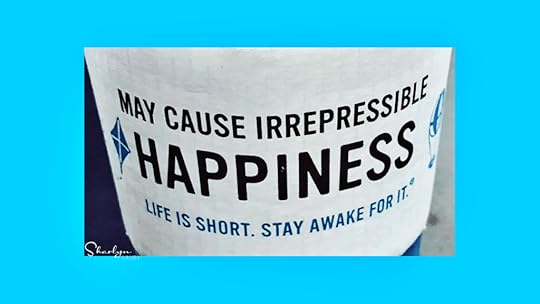
Estimated reading time: 4 minutes
I recently published an article about “7 Tips for Having a Good Day at Work” and it occurred to me that having a good day and having fun are really two different things. Having a good day at work could involve working hard, being challenged and productive … but not necessarily having fun. The reverse is also true, we could have a lot of fun at work and not get anything accomplished. So, is there a way to do both?
We spend approximately one-third of our day at work. It only makes sense that we would want it to be as enjoyable as possible. Having fun at work can improve employee morale, leading to increased employee engagement and retention. It can be a stress reliever and reduce symptoms of burnout.
The hard part is that “fun” is a very broad and subjective term. HR departments will need to figure out enjoyable activities that employees will respond to. On top of that, senior management will expect fun to have a return on investment for the organization in terms of time and resources.
So, how can HR departments infuse some fun into the workplace? Here are seven things to consider:
Define “fun”. Before introducing activities, organizations should reach consensus on what fun means for their workplace culture. It might not be the same as an individual’s definition. For example, fun shouldn’t mean unsafe or unethical. Also, fun doesn’t have to be the same as silly or profane. The goal here isn’t to be restrictive. It’s to create a baseline conversation.Ask employees for suggestions. The first thing HR should do when trying to bring more fun in the workplace is ask employees what they would find fun. And there’s nothing wrong with putting some parameters on the request. “Name 1-2 fun things you’d like to do at work that cost nothing.” Just be prepared to consider what employees suggest.Look at company policies. Before going out and buying dart boards or organizing an ice cream party, look at existing policies and see if there are some places where a policy can be relaxed (thus creating fun). For example, it might be time to review flexible schedules, dress codes, and internet policies to give employees more latitude (which they may find fun).Set a budget. Speaking of buying things, if part of adding fun to work includes activities like game tables and taco parties, then HR will want to set a budget. The important thing to note is fun doesn’t have to be super expensive. That’s one of the best reasons to incorporate an element of enjoyment into the workplace culture. It could be trivia contests or allowing employees to wear headphones, so they can listen to their music. Encourage managers to have fun. Some managers might feel that letting loose a little will hurt their credibility. Employees want to work for a manager who knows when to relax a little and when to be focused. Showing a lighter side could help managers build positive relationships with employees and create more engagement.Show HR’s fun side. While we’re encouraging managers to have some fun, it could be beneficial to show that HR pros can have some fun as well. It’s okay to show that we have a sense of humor. We are still capable of doing our jobs effectively and efficiently. Showing senior management and employees that HR does serious work, but doesn’t always take themselves too seriously, can be gratifying and increase the approachability of the department.Get some creative inspiration from others. Don’t put pressure on yourself to come up with over-the-top fun activities. There are thousands of articles that can offer you creative inspiration. Do a search on your favorite internet browser and put together a list. Or look for a session about fun at your next webinar/conference session. Start putting together a list of possible ideas.Fun means different things to different people. But it doesn’t mean organizations have to banish it from the workplace. HR has a real opportunity to add an element of fun to the company culture. Employees at every level of the organization will enjoy their work more. That translates to higher productivity and better employee retention.
Image captured by Sharlyn Lauby while having fun on the streets of Miami, FL
The post 7 Steps for Having More Fun at Work (and Still be Productive) appeared first on hr bartender.
January 14, 2025
Employee Benefits: What to Expect in 2025

Estimated reading time: 9 minutes
Organizations should expect lots of changes in 2025. This shouldn’t be a surprise.
While we don’t know exactly what the future holds, I’ve published a couple of articles recently about the types of changes that organizations might expect from a legal and compliance perspective and some strategies for managing change. What’s interesting to me is to see the topics that continue to come up in these conversations.
One topic we haven’t discussed is employee benefits. So I asked our friends at HUB International if they wanted to share their insights and they said yes. Cory Jorbin, Esquire, is the chief compliance officer for HUB International’s West Region Employee Benefits team. In his role, Cory consults with employers of all sizes to design, implement and ensure the compliance of employee benefit plans. He holds a a Juris Doctorate from Cleveland State University, is a licensed attorney in the State of Illinois, and is admitted to practice before the U.S. Tax Court.
Cory has spoken to us before about Individual Coverage Health Reimbusement Arrangements and the Affordable Care Act. Please remember that Cory’s comments shouldn’t be construed as legal advice or as pertaining to any specific factual situations. If you have detailed employee benefit questions, they should be addressed directly with your friendly neighborhood labor and employment attorney or benefits broker.
Cory, thanks for joining us. Before we start talking about 2025, let’s talk about 2024. What’s one thing that organizations have ignored (or put on hold) that they need to refocus on next year?

[Jorbin] From an employee benefits compliance perspective, employers should refocus on meeting their fiduciary obligations for their health and welfare plans. For nearly 20 years, we have seen fiduciary litigation against employer sponsored retiree plans, with comparably few lawsuits against health and welfare plans. In 2024, we saw two major lawsuits against Johnson & Johnson and Wells Fargo related to their health plans. These lawsuits have reminded employers that fiduciary duties apply to health and welfare plans too, and not just retirement plans.
In 2025, employers have an opportunity to understand what these fiduciary duties mean, and more importantly, take steps to ensure they are meeting those obligations.
Employers also generally have an opportunity to be more strategic rather than reactionary, not just with their benefits, but generally as well. We live in an age of instant gratification, and while sometimes that can be nice, it can also lead to reactionary decisions rather than a well thought out strategic plan. In other words, slow and steady wins the race.
Speaking of being strategic, let’s move on to 2025. From your perspective, do you see a theme or trend for what organizations can expect in general or specifically to employee benefits?
[Jorbin] With the coming change in administrations, the main theme employers are expecting is change. However, while some change is guaranteed, the specifics are currently unknown and it may take some time for changes to impact employers. This lack of knowing what changes are coming, is leading some employers to be anxious about these changes.
One area I think both individuals and organizations are anxious to know more about is technology, specifically artificial intelligence (AI). Do you see AI playing a prominent role in 2025? Why or why not?
[Jorbin] AI is here to stay and it will continue to play a prominent role in 2025. We are seeing new, innovative tools and resources using AI, as well as existing tools and resources starting to incorporate AI into their products.
Employers are using AI today, even if they don’t know the specifics of how AI is being used, or what the AI does. At the same time, we are seeing more regulations related to AI, as well as employers developing AI policies. HR teams are going to have to get up to speed on how their organizations are using AI today, as well as how their existing tools are using AI.
You mentioned regulations. Is there an area or two of compliance that organizations need to focus on?
[Jorbin] As I already mentioned, fiduciary compliance for health and welfare plans is a major area to focus on. This is also an area unlikely to see change related to the change in administrations. The Johnson & Johnson and Wells Fargo cases are just the tip of the iceberg when it comes to fiduciary litigation related to health and welfare plans. I think of them as test cases. The plaintiff’s attorneys have done this before (and continue to do it) with retirement plans, and they are going down this same path with health and welfare plans. They are seeing what works and what doesn’t and learning from their mistakes. If this is a winning strategy financially, they will continue to pursue these types of cases.
The timing for these cases is also ripe given their focus on prescription drug costs. The country is tired of paying exorbitant prices for prescription drugs, and these cases focus on the prices plans are paying for prescription drugs. We have a rotating wheel of blame when it comes to responsibility for our high healthcare costs. Right now that wheel has landed on prescription drugs, and in particular the pharmacy benefits managers or PBM’s.
Employers should use this as an opportunity to review their plans and consider requests for proposals (RFP) or at least requests for information (RFI) related to their third party administrators (TPAs), PBMs, and other service providers. While nothing can prevent a lawsuit like Johnson & Johnson, solid processes and documentation of those processes can help protect employers.
Another big focus for many employers will be on Form I-9 employment verifications. During the 2024 presidential campaign, immigration was a hot topic. Since the election, it has remained a hot topic and will be a priority for the new administration. For employers, this means making sure their Form I-9s and other employment verification documentation is properly completed.

While many organizations have already put their operational plans and budgets in place, sometimes, organizations revisit their strategies and goals based on what’s happening in the business environment. Is there something that you would suggest organizations add to their process, so they stay current?
[Jorbin] It would definitely be helpful for organizations to include this as part of their planning and budgeting process. At the very least, this forces the employer to look ahead into the future and determine what they expect, why they expect it, and how the expectations shape the future of the organization. Of course not every future prediction will come true, but this is a valuable exercise.
Quick follow-up: Is there anything that organizations can do to monitor how “good” their outlook forecast was?
[Jorbin] Quantitative predictions are easily measured, but qualitative much less so. That being said, organizations should absolutely monitor their forecasts. One potential way to do this is to take a mid-year inventory of their forecasts and see how they are trending. Some forecasts may trend towards being accurate, while others less so. This also presents an opportunity to revise forecasts.
Finally, at the end of the year these forecasts should again be analyzed. What forecasts were accurate, and which were not? Why were some forecasts accurate and others not? Were there any key misses?
Last question and I’m shifting from organizations to individuals. Given our conversation about the outlook for 2025, what are a couple of things that HR professionals should consider when they’re setting goals for their department?
[Jorbin] When setting goals for 2025, I see two opportunities for HR professionals…leadership development and talent retention.
Our population as a whole is aging, with the youngest baby boomers turning 60 in 2024. Many baby boomers are already retired, and many more will be retiring in coming years. As a result, this could leave many organizations with a shortage of leadership and experienced talent. Leadership doesn’t just mean at the C-Suite level, but also includes middle and lower level managers too. HR should use this as an opportunity to identify talent to move into those leadership roles as current employees retire. Organizations could find they have gaps in certain departments with no readily available ‘number two’ ready to become ‘number one’. Likewise, they need to think beyond just their organizations because while they may have a ‘number two’ ready to become ‘number one’ their competitor may not, which means their competitor may look to poach their talent.
This should also include evaluating the current population and identify those with interest in and potential to move up. Moving up also looks different for different employees, and employers should recognize that leadership development is not a one size fits all approach.
Leadership development aligns with talent retention, which employers should also focus on. We don’t want to develop our key talent only to see them leave for potentially greener pastures elsewhere. We want a return-on-investment (ROI) on our leadership development efforts, which means retaining talent.
While the unemployment rate has crept up in recent months, it is still lower than the average over the last twenty years. Some of the higher profile layoffs we have heard companies doing may be due to employers ‘rightsizing’ their teams after Covid-era hiring sprees. Other employers are simply cutting back on hiring, or choosing not to backfill certain open positions. This highlights the importance of employers keeping the existing talent they have.
I want to thank Cory for sharing his insights with us. There’s a lot of relevant employee benefits information here for organizations to think about as they are starting the year – as well as throughout the year. If you would like to learn more, be sure to check out HUB International’s 2025 North American Outlook.
Organizations and HR departments need to expect changes in the upcoming months. As Cory mentioned, it might be easy to find a fast solutions. But those fast solutions might not be the best in the long-term. And by “best”, I mean in terms of the workforce and profitability.
The post Employee Benefits: What to Expect in 2025 appeared first on hr bartender.
January 12, 2025
Job Seekers Should Focus on Skills Development
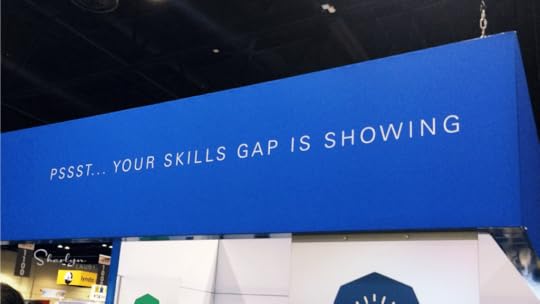
Estimated reading time: 3 minutes
If you’re thinking about a new opportunity, it makes good sense to take inventory of what you have to offer an organization in terms of skills. In fact, even if you’re not looking for a new opportunity, you might want to do a self-assessment of your skills as well. The results could help you develop good learning goals.
An increasing number of organizations are focused on “skills-based hiring”. Just a quick reminder, a skill is defined as “the ability to do something well”. So, skills-based hiring is when organizations focus on a candidate’s skills over things like work experience or education.
I wanted to share with you today three articles that you might find helpful as you’re thinking about your current skills and skills you want to consider developing in the future. As you’re thinking about your goals for the New Year, think about those skills you have – maybe grade yourself on how well you know each skill. Be honest! No one has to see this but you. Then you can identify those skills you want to work on and start looking for learning activities to help you develop those skills.
Use Artificial Intelligence to Increase Your Curiosity
Organizations want employees who are curious. I found an old Harvard Business Review article that cited research showing curiosity leads to high performance and better adaptability. I honestly don’t know that things have changed. Curiosity can certainly lead to innovation.
10 Public Speaking Tips for Your Next Business Presentation
The best way to learn public speaking is by doing. It’s one of those things that gets easier with frequency. And being a little nervous is okay. It’s about focusing on being comfortable with the room so you can showcase your expertise and knowledge. After all, that’s why the audience is there in the first place.
Having Media Literacy Is a Business Competency
As businesspeople, we spend a lot of time on the internet. We use articles and reports from the internet in our presentations and proposals. We share content on our social media accounts. We comment on what people write on their blogs, etc. It’s important that we’re responsible media publishers which means as individuals, we must learn how to be media literate.
According to an article on Fast Company, 43% of Americans feel stuck in their jobs right now. The same article says that there are 2.5 applicants per job posting on LinkedIn. To me, this says we should expect a competitive labor market. And that it shouldn’t be a surprise that organizations are going to focus on skills when hiring.
Job seekers will want to demonstrate that they are able to use emerging technologies like artificial intelligence. They will want to be able to communicate well to individuals and groups. And it’s essential that the information they communicate is accurate and timely. In today’s job market, I don’t know that it’s an unreasonable request. Job seekers will want to think about how they can convince a prospective employer that they have those skills.
Image captured by Sharlyn Lauby after speaking at the SHRM Annual Conference in Las Vegas, NV
The post Job Seekers Should Focus on Skills Development appeared first on hr bartender.
January 9, 2025
Bookmark This! Artificial Intelligence Edition

Estimated reading time: 3 minutes
One of my goals for the year is to learn more about artificial intelligence (AI). I think we will see artificial intelligence used even more in our professional and personal lives in the years ahead, so it’s good to invest some time to learn a little more about it.
Because artificial intelligence is becoming more mainstream, organizations will need to define how they plan to use AI. And they will want effective ways to communicate this to customers, vendors, and employees. Today, I wanted to share with you some resources that might be able to help with developing an AI policy.
Why Organizations Need an Artificial Intelligence Policy
Given some of artificial intelligence’s (AI) challenges right now, it might be tempting to say that AI isn’t the panacea that everyone expected it to be. However, I think we’re still very early in the AI adoption curve, so organizations need to continue to pay attention to what’s developing. Organizations have been spending time developing an AI strategy. Now it’s time to talk about developing an internal AI policy.
What Organizations Should Include in Their Artificial Intelligence Policy
Organizations have a lot to consider when drafting an artificial intelligence policy. There are the considerations based on your industry and jobs. And then there’s existing legislation, which is changing to meet the needs of the modern workplace.
10 Things to Include in Your Artificial Intelligence Policy
If organizations haven’t already done so, now is the time to start thinking about an AI policy. And if you have one – great! Remember to regularly review and revise it. Artificial intelligence isn’t going away. Organizations today need to have an opinion about how they will use it.
How to Implement an Artificial Intelligence Policy
Employers should also publish a written policy in its entirety. Policies can be socialized and distributed through TEAMS channels, posted on company intranets, and delivered in team meetings, manager 1×1 meetings, and in quarterly or annual town-hall meetings. The more the company is communicating about the AI policy the more it will become socialized inside the organization’s culture and way of thinking.
Use Artificial Intelligence to Increase Your Curiosity
Organizations want employees who are curious. There’s an old Harvard Business Review article that cited research showing curiosity leads to high performance and better adaptability. I don’t believe that has changed. Curiosity can certainly lead to innovation. That’s how we can learn more about artificial intelligence – by being curious and asking good questions.
One last resource I wanted to share. Our friends at Foley & Lardner LLP recently published “The Fast Follower’s Guide to Recent AI Law” (registration required). This guide talks about developments in AI from a legal perspective.
According to the World Economic Forum, trillions of dollars (yes, trillions) is being spent on artificial intelligence. This should be a signal to individuals and organizations to learn about AI and start developing some opinions. And because the technology is developing so rapidly, it’s going to take time to get current and stay current with what’s happening.
I’ve said it before, and I’ll say it again . . you don’t have to be an early adopter. But you also don’t want to be left behind. So now is the time to learn about AI and the impact it can have on our personal and professional lives.
Image created by DALL-E for Sharlyn Lauby
The post Bookmark This! Artificial Intelligence Edition appeared first on hr bartender.
January 7, 2025
Improve Your Business Acumen Using These 10 Activities

Estimated reading time: 6 minutes
At the beginning of the year, I always find myself thinking of goals and activities that I want to improve or work on. I don’t want to use the word resolutions. Rather I think of it more as refocusing on activities I should be doing more regularly.
With all the talk about the new administration, it should be no surprise that we need to understand the business. In fact, as I’m typing this, I don’t know that it’s good enough to just understand the business. We need to be able to talk about it and make decisions related to the business.
One of the behavioral competencies in the Society for Human Resource Management (SHRM) competency model is business acumen. But honestly, I’ll admit it can be challenging to develop business acumen. The business world is constantly changing. Oh sure, a lot of people throw buzzwords around like “idea harvesting” and “hero culture” but do they really know what those terms mean?
It’s always a challenge to stay current, especially when your schedule is already full. To keep up, I find it helpful to take inventory of the activities that I’m doing. It reminds me to step back and just get focused. So, here’s my list of suggestions for building business acumen.
Learn how your organization makes and spends money. Years ago, as part of my company onboarding, I had to schedule a meeting with the CFO to review the profit and loss statement. It was one of the best learning activities I’ve ever done. Not because I didn’t know how to read the P&L, but because I learned how the CFO read the P&L. The good thing is there’s no rule that you’re only allowed to do it once. If you’ve never done this before, consider doing it this year. Maybe even do it again right before budget time. Know your customer. When I talk about customer here, I’m not referring to employees. Do you know who the top ten customers are for your organization? Not just their names, but do you know what they do? One of my past employers asked me to go with the sales team on regular customer calls. Super valuable! If you’ve never done it, consider asking a sales manager if you can. You’ll learn a few things and I’d bet the sales department will be happy you did. Step out of your regular responsibilities. I realize everyone is busy, but the next time your manager is looking for a volunteer, consider raising your hand. Getting involved in special projects can help you 1) learn new knowledge and skills 2) build new working relationships and 3) get noticed by the organization. Special assignments might be worth it from both a learning perspective and your long-term career development. See if you can find some extra time to make it happen.Join your professional association. The decision on which professional organization(s) to join belongs to you and everyone needs to figure that out on their own. But I do believe it’s valuable to be a member of a professional organization. Let me add that I feel it’s important for individuals to volunteer. Not only will you make lifelong friends, but you will learn from your colleagues. Part of developing business acumen includes developing both an online and an offline professional network. Pick a topic you know nothing about … and learn. I mentioned at the beginning of this article that the business world is constantly changing. One example of that is artificial intelligence (AI). We don’t need to become experts at everything. But picking a topic and learning more will help us ask better questions in the future. It will also help us form an opinion about new things shaping our workplaces. Learn a new technology. Speaking of technology, given that our use of technology keeps expanding, it makes sense to learn something new about today’s tech. It doesn’t have to be a big software program. Maybe it’s an app you’ve been wanting to carve out some time to test drive. For instance, since I do a lot of remote work, I’ve been focused on learning more about cybersecurity. Take a massive open online course (MOOC). As you’re thinking about a new subjects to learn, also consider how you want to learn. Many major universities offer free online courses called MOOCs. Two popular ones are Coursera and edX. I try to take at least one MOOC a year. A few years ago, I took one on cryptocurrencies. Taking the course not only exposed me to new topics, but the online chats offer insight into different views from all over the world. It’s a great way to gain a global perspective. Expand your business book library. I’d like to think that everyone has a library – big or small – of books they use on a regular basis. Maybe it’s time to expand it. Ask a handful of people for some business book recommendations. And when you’re thinking about who to ask, consider a diverse group of people who might not always think the way you do. Read and/or listen to the right stuff. Trust me, I hate junk emails as much as the next person, but there are some electronic newsletters that provide great up to date information in a concise format. I’ve been following David Green, co-author of Excellence in People Analytics, on LinkedIn. He sends out an electronic newsletter with articles and videos – very interesting.Find a self-care activity that works for you. You might be saying, “What does this have to do with improving business acumen?” The answer is a lot. You will learn more and perform better after you figure out the best way to take care of yourself. Try to infuse some fun in the activities I’ve listed. Recognize and reward your accomplishments. Take time for yourself.Over time, I’ve come to realize that business acumen isn’t something you learn once and you’re done – especially in today’s business environment. That’s why periodically reviewing a list like this could be helpful. It can serve as a refresher and keep us focused.
Business acumen is changing all the time. Yes, it’s true that terms like profit and EBDITA haven’t changed. Now, we have new terms like coffee badging, bare minimum Mondays, and anti-perks. If you want to be a contributor and partner to the business, then you must know how to continuously gain exposure to new business concepts and ideas.
Image captured by Sharlyn Lauby while exploring Duval Street in Key West, FL
The post Improve Your Business Acumen Using These 10 Activities appeared first on hr bartender.
January 5, 2025
HR Professionals Can Be Friendly Without Being Friends

Estimated reading time: 3 minutes
I’ve been seeing some postings on LinkedIn of a person holding a sign with a comment about HR. Honestly, I assume it’s some sort of advertisement for HR related products or services. But one of the signs stuck out for me – it said something to the effect of “HR is not your friend.”
On some level, it’s true – HR isn’t. In many organizations, the human resources department acts as the eyes and ears of the workforce. They’re supposed to know what employees are thinking and feeling. Companies use HR’s feedback to understand what employees enjoy about their work and quickly address issues when they occur.
Just because HR isn’t your friend, it doesn’t mean they can’t be friendly. If HR is expected to know what the workforce is thinking, they need to have a rapport with employees. This can be a tricky subject. HR wants employees to share their thoughts while, at the same time, they don’t want to get too close. At every level of the organization, HR needs to be viewed as objective and impartial.
So, how can HR professionals come across as friendly without being criticized for not being friends? Here are five things to consider:
Set expectations about the role of HR. While HR departments have similar functions, it’s reasonable to think that every organization views HR’s role a little differently. Human resources departments would be well served to explain their role during the hiring process and orientation. Help employees understand how to best use HR.Be approachable and authentic. Contrary to how some media outlets might portray HR, we are human. We take our jobs seriously. We also love a good joke and like to have fun. It’s perfectly acceptable to let employees see the fun and human side of HR. Employees are willing to open up and talk to people they have a connection with.Have a personal social media policy. In today’s technology driven workplaces, it’s important to have a personal philosophy on who you will connect, friend, like, etc. on social media channels. This isn’t the same as the company policy. There are several factors to consider such as the best way to handle disciplinary action if you’re connected with an employee. HR pros need to ultimately decide the best way to handle social media requests.Have a personal practice regarding company events. Whether it’s an afternoon coffee in the breakroom or adult beverages after work, employee gatherings can build relationships and start conversations. HR is often invited and there’s nothing wrong with making an appearance. But HR pros need to be keenly aware of the balance between stopping by and overstaying their welcome. Address any confusion directly. It’s possible even after doing all of the things mentioned that an employee will misinterpret HR’s role. Don’t delay or be subtle about addressing the situation. Not confronting the issue directly could add to the confusion. Have a private conversation with the employee and explain. They will appreciate being treated in a respectful manner.Human resources professionals need to create relationships at every level of the organization. Relationship management is a defined competency for HR pros in the Society for Human Resource Management (SHRM) body of applied skills and knowledge (BASK). So, have some fun, spend time with employees, and build a rapport within the organization. It’s very possible to do this and still maintain professionalism and objectivity.
Image captured by Sharlyn Lauby while exploring the streets of Nashville, TN
The post HR Professionals Can Be Friendly Without Being Friends appeared first on hr bartender.
December 29, 2024
Update on Federal and State Labor Laws Taking Effect January 1, 2025
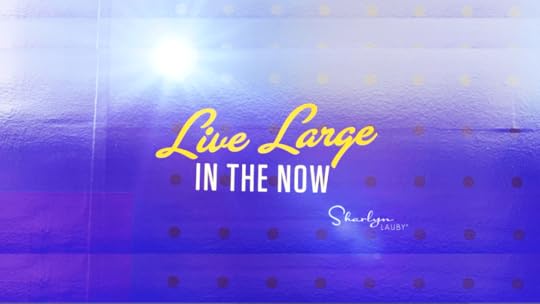
Estimated reading time: 3 minutes
I’ve published a couple of articles lately about what labor laws employers could expect to change in 2025 with the new administration.
How to Prepare for HR Compliance in 2025
Managing Change is an Essential Skill
While it’s important to think about what could happen at some point in the future, it’s equally important to know what is going to happen. Fisher & Phillips LLP put together an Employer Cheat Sheet for Workplace Laws Taking Effect on January 1, 2025. Definitely worth checking out!
On a federal level, probably the most noteworthy update is that Phase 2 of the new overtime rule is not scheduled to take effect. This has been in the news lately because some employers gave wage increases to employees in anticipation of the change … and some have subsequently taken them back.
On the state level, several states are scheduled to increase their minimum wage. There are also several labor laws regarding “captive meetings” where employers hold mandatory meetings to discuss religious, political, and/or union related topics.
Again, the employer cheat sheet is worth reviewing to stay on top of the latest developments. It also brings up a good question. Where can HR professionals go to get regular updates about labor laws and compliance? If you don’t have a curated list of blogs, newsletters, and websites, this could be a great time to put one together. Here are a few to get your list started:
Foley & Lardner LLP is a law firm focused in the energy, health care, technology, and manufacturing sectors.
HUB International provides advisory services to organizations on risk management, employee benefits, and retirement.
The Ohio Employer Law Blog is written by Jon Hyman at Wickens Herzer Panza. While the title mentions the state of Ohio, Jon also writes about legal issues on a federal level.
The Employer Handbook is written by Eric Meyer at Pierson Ferdinand. It’s been recognized by the American Bar Association as a top employment law blog.
Like everyone else, I don’t know what’s going to happen with the new administration. But I am always looking for good information sources that can help me filter out misinformation and disinformation relative to labor laws. As a HR professional, that’s what people expect from me – good, reliable information now and in the year ahead.
Image captured by Sharlyn Lauby after speaking at the SHRM Annual Conference in Las Vegas, NV
The post Update on Federal and State Labor Laws Taking Effect January 1, 2025 appeared first on hr bartender.
December 22, 2024
High-Performing Teams Are the Key to Organizational Success
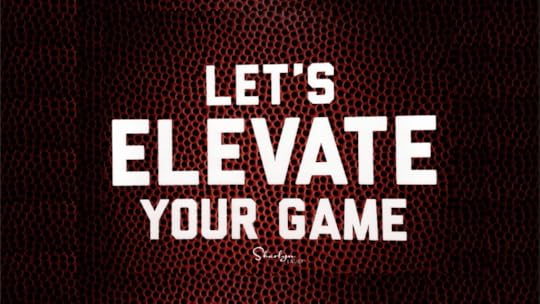
Estimated reading time: 3 minutes
Organizations are doing many of the same activities right now. They’re budgeting and planning for the New Year. They’re speculating about what the new government will be like and the impact it will have on business. While we don’t have all the answers right now, there’s a few things we do know.
Organizations expect to accomplish their goals. To accomplish goals, organizations need to have high-performing employees and high-performing teams. This involves a training and development investment. High-performance doesn’t just happen. It takes having an intentional plan to give employees the knowledge, skills, and abilities they need.
If you’re looking at your training and development opportunities, here are a few articles that might help you focus on the topics to cover for high performance.
3 Proven Ways to Make New Team Members Feel Welcome and Included
Making new hires feel welcomed and included should begin at the candidate stage and continue during orientation and onboarding. In fact, some organizations have new hire buddy programs to help with the process.
Team Building and Team Development Are Not the Same Thing
Team development and team building serve two different purposes, this isn’t an either/or situation. Both should be done. A group that has team development but not team building might struggle because they don’t understand their role and goals. And a group who attends team building without team development might know what they’re supposed to do but not have the skills to get it done.
Managers: The One Thing to Improve Employee Performance
Employees want to hear feedback about their performance. This isn’t a generational thing. Specifically, individuals like getting well-thought-out feedback, with an emphasis on the “well-thought-out” part.
Create Effective Organizational Change Through Leadership Development
The key to successfully managing any type of change starts with leaders. Organizations should give leaders the training and tools they need to manage change at every level. And that happens during leadership development.
Organizations that want a high-performing workforce need to start the process at the very beginning with onboarding. Employees should receive training for their role as well as development on how to be a good team member. Managers need to provide regular feedback to employees about their performance. And everyone needs to learn how to effectively manage change. It looks like that will be critical in the years ahead!
The business world is constantly changing. We should expect it. But organizations still need to make money and accomplish their strategic goals. The only way to do that is with the right workforce. Focusing on high-performing teams will create a competitive advantage.
Image captured by Sharlyn Lauby while exploring the streets of Miami, FL
The post High-Performing Teams Are the Key to Organizational Success appeared first on hr bartender.
December 19, 2024
Managing Change Is an Essential Skill
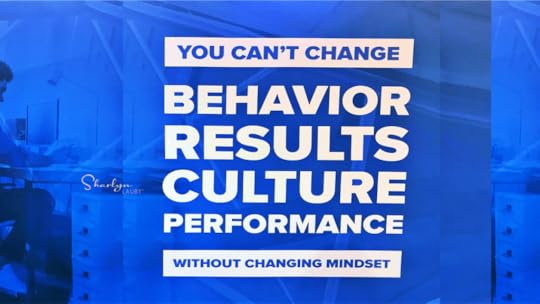
Estimated reading time: 3 minutes
Like the title of today’s article says, I’d like to believe we can all agree that being able to manage change is an essential skill. The question becomes what’s the best way to do it.
I was reminded of this while listening to Foley & Lardner’s webcast on “What Do Election Outcomes Mean for the Country, Your Industry, and Your Company?”. While this webcast was broadcast immediately after election day – so some of the speculation about who will be nominated for cabinet positions has been answered – it’s still worth a listen. I found it interesting to hear where it aligned with another webcast I had listened to about 2025 and HR compliance. A couple of my takeaways from the Foley webcast include:
Stay current with government appointments. Just like in our organizations, who is selected to lead departments, committees, and projects can have a huge impact on outcomes. If you’re trying to understand the business landscape, knowing who the government has appointed to lead certain committees will be valuable. For example, the person selected to chair the National Labor Relations Board could have an impact on employee relations.
Expect a deregulation agenda. I don’t know that this is a surprise. It’s been discussed throughout the election cycle. If current laws are changed or rolled back, organizations will have some decisions to make. Will they keep doing what they’re doing – even if it’s not required? This isn’t a simple question with an obvious answer.
Which is why I wanted to talk about managing change today.
Change is always present. Some changes might be small, others large scale. Some changes could be things we’ve been hoping for and others … not so much. We don’t always have the luxury of dealing with one change at a time. You get my point. Change is hard. So having a strategy for dealing with change is essential.
Organizations could really benefit by finding a change management model that works and sharing that model throughout the company. Two well-known models include Kotter’s 8-Step Model and Lewin’s 3-Step Model. One model isn’t “better” than the other. Both are great in terms of outlining the steps to identify and implement change. The important part is to find one that works.
Once organizations have identified a model, then think about having dedicated training sessions (maybe during onboarding) to equip employees with the tools to use it. Build time into existing training programs to show employees how to use the change management model with the content they’ve just learned.
And during times like these when we know change is coming, consider offering a couple of refresher sessions about how to manage it. This could be designed as an internal podcast or webinar to remind employees about the principles for handling change.
This will help employees manage change well – in both their personal and professional lives. And this will ultimately help the organization manage change, regardless of what the future brings.
Image captured by Sharlyn Lauby while exploring the streets of Chicago, IL
The post Managing Change Is an Essential Skill appeared first on hr bartender.
Sharlyn J. Lauby's Blog
- Sharlyn J. Lauby's profile
- 10 followers



